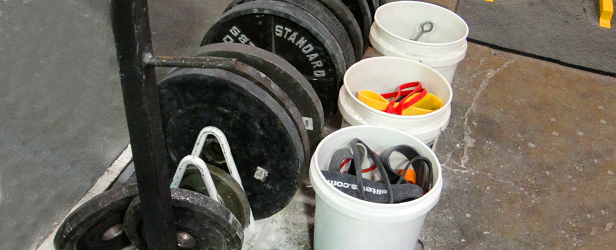
One of the main distinguishing features of the Soviet system of training athletes is their distinction between general and specialized exercises. In fact, the development of specialized exercises by the Russians was probably one of the key factors in the great improvement seen in their athletic ability, not only in competition but in their technique and development of sport-specific physical abilities. In contrast, in the U.S., we are still using general strength training exercises for conditioning, not true specificity of exercise in training.
The Russians in their periodization plan go through an initial general physical preparation period (GPP) in which the general exercises are used. They then move into the specialized physical preparation phase (SPP), in which the exercises duplicate what occurs in execution of the sports skill. More specifically, in this period, the criteria for an exercise to be specific are as follows:
- The exercise must duplicate the exact movement witnessed in certain actions in the competitive skill.
- The exercise must involve the same type of muscular contraction as used in a competitive skill.
- The special exercise must duplicate the same range of motion where strength is displayed as in the actual competitive skill.
The concept of exercise specificity is new to sports but the term specificity is not. Many authors use the term, specific exercises, but few of the exercises actually fulfill the previously mentioned criteria. The specificity referred to by these authors usually refers to strengthening or stretching the muscles that may be involved but not in the way that they are used in the competitive skill. Usually these people call the exercises functional, but they can’t be if they are not sport-skill specific.
Todd Marinovich, a football quarterback, is a great example of the success that can be achieved by using specialized exercises. He broke most if not all of the high school records for his performances as well as many collegiate records when he was quarterback for the USC team in the 1980s. I worked extensively with him on his throwing technique and physical abilities specific to his throwing from the time he was 13-years-old. I created many specialized strength and explosive exercises for him that improved his throwing abilities well beyond our expectations. Many of these are shown in the CD, Specialized Strength and Explosive Exercises for the Quarterback (visit www.DrYessis.com).
Thus, the key to improving performance is to do special exercises that duplicate the movements and actions seen in the competitive skill. Developing physical abilities specific to the skills will have the greatest impact on improving one’s ability to perform more efficiently and effectively.
General exercises are not directly related to the specific action seen in the sports skill. They are used mainly for conditioning and preparing the body for more intense work as seen in special strength and explosive exercises. They are also needed when the athlete is out of shape and preparing himself for the upcoming season and for young athletes who have not yet started high intensity training.
The overhead press exercise can be used to illustrate the concept of a general strength exercise. It is a common exercise used in sports and fitness programs to strengthen the shoulder muscles. In this exercise, the arms move directly upward in a sideward pattern. In running, however, the arms move in a forward/backward motion below the shoulder in relation to the trunk. Thus, the overhead press is a good exercise for strengthening the shoulders and arms, which are used in running, but it is not directly related to the running joint actions.
For more information, read Build a Better Athlete and see the CD, Specialized Strength and Explosive Exercises for the Quarterback.
Dr. Michael Yessis is a professor emeritus in biomechanics and kinesiology and president of Sports Training Inc., a diversified company that does specialized work with athletes and develops specialized training equipment. He is considered the foremost U.S. expert on Russian training methods. He has traveled to Russia multiple times, has worked with Russian coaches including Yuri Verkhoshansky, and has translated and published Russian training articles in the Fitness and Sports Review International for over 29 years. Dr. Yessis also wrote the number one article read in Muscle and Fitness (Kinesiology—Training Notebook) for over 25 years. For more information, visit his website at www.dryessis.com.








